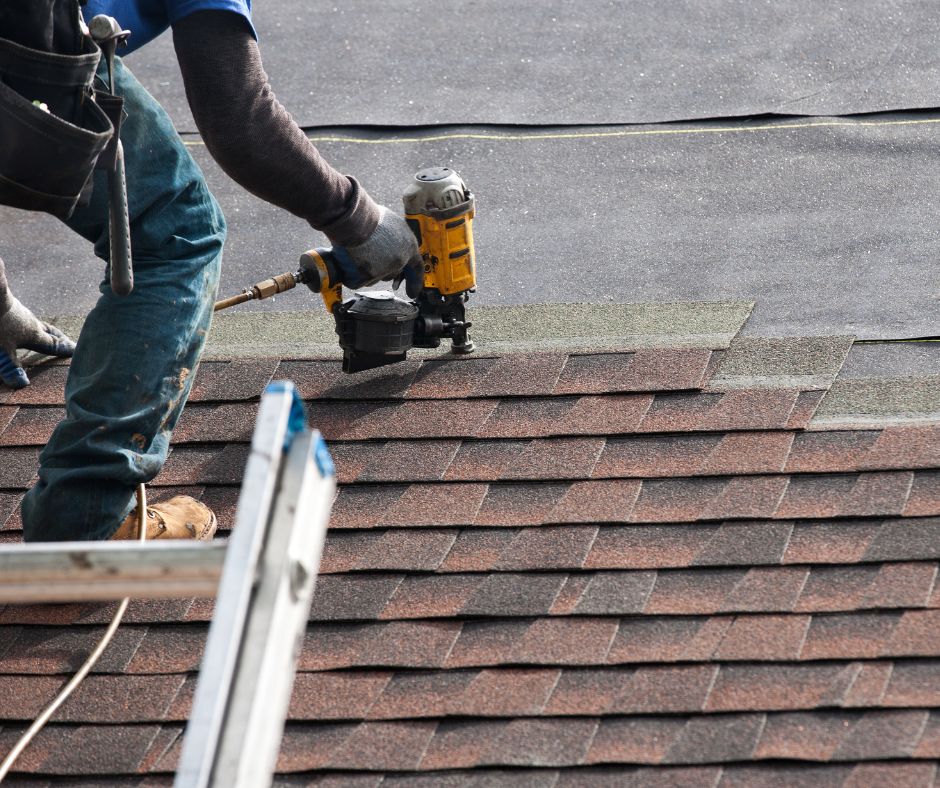Roofing underlayment may not be the most glamorous aspect of home construction, but it is crucial in protecting your home from the elements. From safeguarding against water leakage to providing an extra layer of insulation, underlayment is a vital barrier between your roof and the outside world. But how exactly does it accomplish this? In this discussion, we will delve into how roofing underlayment accomplishes these tasks, shedding light on its secrets with insights from a roofing expert. So, buckle up and get ready to discover the hidden hero that keeps your home safe and sound.
Water Protection
Water protection is a crucial aspect of roofing underlayment, ensuring the integrity and longevity of a home’s roof. The primary function of roofing underlayment is to act as a moisture barrier, preventing water from penetrating the roof structure and causing damage. This is achieved through the use of advanced waterproofing technology. The underlayment is designed to repel water and keep it away from the roof’s vulnerable areas, such as the decking and insulation. By creating a waterproof barrier, the underlayment protects the roof from leaks, rot, and mold growth, which can compromise the home’s structural integrity. The underlayment also helps regulate moisture levels within the roof, reducing the risk of condensation and further damage. Water protection is critical to roofing underlayment, safeguarding the home, and ensuring its long-term durability.
Wind Resistance
With water protection being a critical aspect of roofing underlayment, it is equally important to consider the subtopic of wind resistance to ensure comprehensive home protection. Roofing underlayment installation is crucial in safeguarding homes against strong winds and storms. The underlayment materials should possess high wind resistance capabilities to prevent damage to the roof structure. The underlayment acts as a secondary barrier, providing an additional defense against wind-driven rain and potential water intrusion. It helps prevent wind uplift, which is when strong winds create an upward force that can lift and damage the roofing materials. By adequately installing the roofing underlayment and using materials with excellent wind resistance, homeowners can enhance the durability and longevity of their roofs, ensuring better protection against wind-related issues.
Ice Dam Prevention
Proper roofing underlayment installation is crucial to prevent ice dams and potential damage to the roof. Ice dams form when snow on the roof melts and then refreezes at the edge, leading to the accumulation of water that has the potential to penetrate the home. Here are three ways roofing underlayment helps prevent ice dams:
– Waterproofing: Underlayment acts as a barrier against water, preventing it from infiltrating the roof and causing damage.
– Heat Retention: Underlayment with high thermal efficiency helps retain heat within the home, preventing snow from melting and refreezing at the roof edge.
– Ventilation: Adequate ventilation in the attic helps regulate temperature and moisture, reducing the likelihood of ice dam formation.
Enhanced Insulation
In addition to preventing ice dams, proper roofing underlayment installation also contributes to enhanced insulation for the home. Roofing underlayment acts as an additional layer of protection against heat loss or gain, thereby improving energy efficiency. It helps to minimize thermal bridging, which occurs when heat transfers through materials with high thermal conductivity, such as the roof deck. By reducing thermal bridging, roofing underlayment helps to maintain a more consistent indoor temperature, reducing the need for excessive heating or cooling. Roofing underlayment can also provide soundproofing benefits by absorbing and dampening exterior noise. This is particularly beneficial for homes in noisy areas or near busy roads. Proper roofing underlayment enhances energy efficiency and soundproofing, creating a more comfortable and sustainable living environment.
Extended Roof Lifespan
Proper roofing underlayment installation and maintenance is crucial for extending a roof’s lifespan. By providing an extra layer of protection, underlayment helps shield the roof from water damage and prevents leaks. This not only safeguards the integrity of the roof but also protects the structure of the entire house.
Here are three critical ways in which roofing underlayment contributes to an extended roof lifespan:
– Enhanced durability: Underlayment acts as a barrier against harsh weather conditions, such as heavy rain, wind, and snow, thereby preventing damage to the roof.
– Improved energy efficiency: Underlayment with reflective properties can help reduce heat transfer, resulting in lower energy consumption and improved energy efficiency within the home.
– Reduced maintenance costs: By providing an additional layer of protection, underlayment helps minimize the risk of damage, reducing the need for costly repairs and maintenance.
